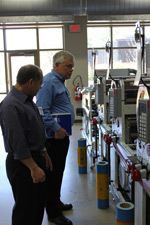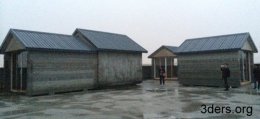 Clemson’s Sonoco Institute Offers Opportunities for PE
Clemson’s Sonoco Institute Offers Opportunities for PE
By David Savastano
It is clear that universities are, in many cases, taking on a lead role in printed electronics (PE), with quite a few successful start-ups emerging out of university spin-outs.
One such example is Clemson University, located in Clemson, SC. In 2004, Clemson came up with the idea of creating a state-of-the-art packaging facility to bring together the strengths of its Graphic Communications and Packaging Science departments. In 2009, the Sonoco Institute of Packaging Design & Graphics was launched.
The initial idea for The Sonoco Institute was to emphasize packaging design, but there is much more to design than just appearance and basic structure, according to Chip Tonkin, director of the Sonoco Institute of Packaging Design & Graphics.
 “‘Packaging Design’ incorporates much more than the structural and aesthetic elements that typically come to mind – done properly, this process should incorporate a wide range of disciplines including material properties, structural attributes, environmental sciences, manufacturing, marketing and psychology, ” said Tonkin. “As this became apparent, our mission broadened into something that will have a much greater impact.”
“‘Packaging Design’ incorporates much more than the structural and aesthetic elements that typically come to mind – done properly, this process should incorporate a wide range of disciplines including material properties, structural attributes, environmental sciences, manufacturing, marketing and psychology, ” said Tonkin. “As this became apparent, our mission broadened into something that will have a much greater impact.”
With its extensive capabilities, the Sonoco Institute is fulfilling its educational objectives while providing training and developing new technologies for the field of packaging.
“The goal is to leverage our core campus strengths along with the knowledge and participation of our industry partners to make significant contributions at three levels – as an academic stimulator, an industry resource for training and research, and a driving force to bring new technologies and innovations to the packaging and graphics markets, ” Tonkin noted. “The process of formalizing these goals, building a facility and marshaling the appropriate resources went quickly.”
When the Sonoco Institute opened in 2009, it was clear that printed electronics has a place in packaging design, and the Sonoco Institute incorporated printed electronics into its educational curriculum. In terms of PE, the Sonoco Institute is focused on the commercial optimization and deposition of advanced materials on flexible substrates, with an eye on the growing interest in smart packaging.
“We leverage our expertise in traditional package printing technology with our industry network for discovery, benchmarking and utilization in the broad field of printed electronics, ” Jay Sperry, research associate at the Sonoco Institute, said. “Because of our packaging focus, obviously applications such as smart packaging and advancing the interaction of packaging within retail environments are of particular interest. We look at markets where layering and device material characteristic requirements are ripe for manufacturing with today’s printing capabilities such as lighting, photovoltaics, batteries and sensors. In tandem, we also provide an environment for advanced printing and coating research to elevate manufacturing capabilities to enable more precise devices and applications for printed electronics.”
The Sonoco Institute brings a wealth of expertise in many key aspects of the PE industry, including its partners and faculty members. Because of its extensive connections through the entire packaging supply chain, Tonkin said that the Institute’s real value lies in its ability to pull together collaborators across many vertical and horizontal markets, extending from the raw material and equipment suppliers, the printers and converters, the marketing and creative agencies, all the way through to the consumer products companies.






